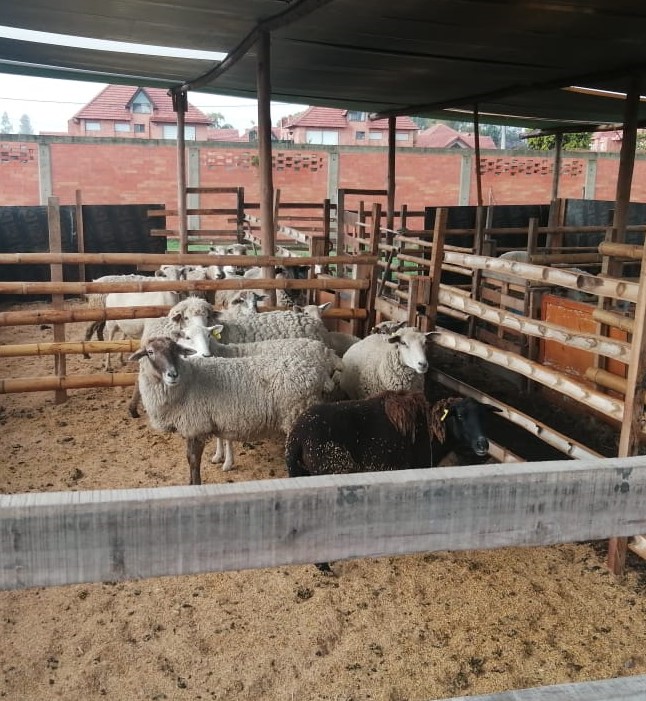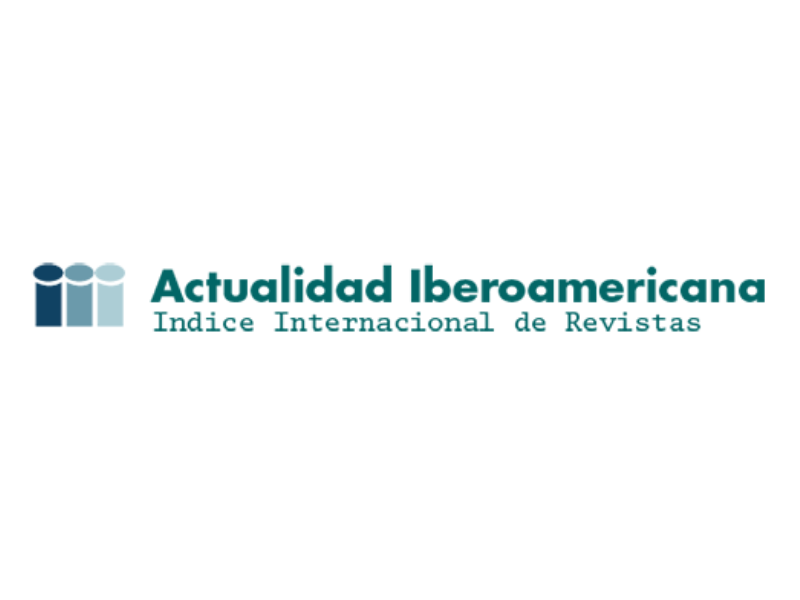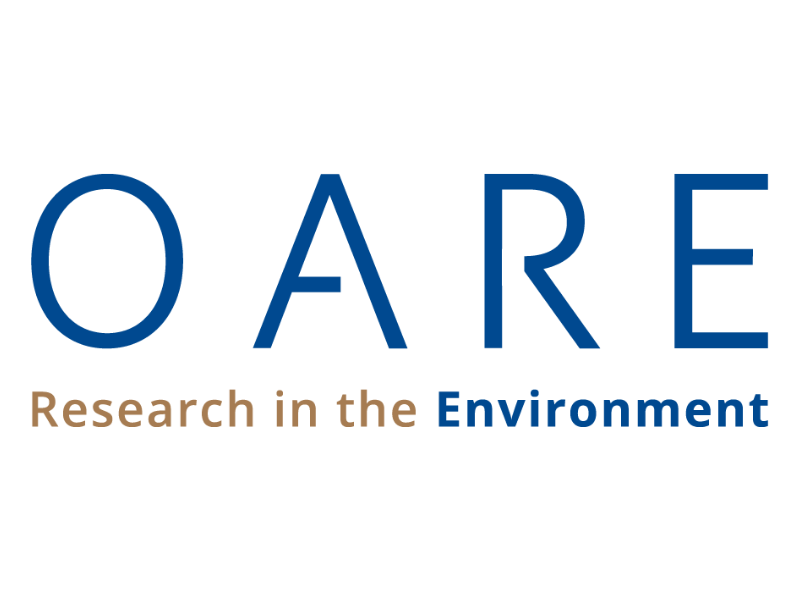Un Bienestar para todos: Asociaciones entre indicadores de bienestar ovino y la salud mental de productores
One Welfare for all: Associations between sheep welfare indicators and producers’ mental health

Esta obra está bajo una licencia internacional Creative Commons Atribución-NoComercial-CompartirIgual 4.0.
Mostrar biografía de los autores
Objetivo. El objetivo de este estudio observacional-transversal fue investigar asociaciones entre puntajes de salud mental para estrés, ansiedad, depresión y resiliencia de ovinocultores, e indicadores de bienestar ovino. Materiales y métodos. Se visitaron 22 fincas en Boyacá, Cundinamarca, Tolima y Meta, Colombia. Se evaluó salud clínica, limpieza y tranquilidad de ovejas seleccionadas al azar por finca para identificar número de animales con diferentes problemas de bienestar, como cojeras, sobrecrecimiento de pezuñas, y mastitis. Se realizó una entrevista cara-a-cara con el productor para recopilar información demográfica (tamaño y año de establecimiento del sistema, género, edad, rol y educación) y para completar las escalas-psicométricas para evaluar resiliencia, estrés, ansiedad y depresión. Se utilizaron modelos de regresión lineal para evaluar asociaciones entre las puntuaciones de salud mental de los productores, aspectos demográficos y prevalencia de indicadores de bienestar animal. Resultados. Se evaluaron 427 ovejas. Los problemas de bienestar más prevalentes fueron sobrecrecimiento de pezuñas (40,9%) y vellón sucio (32,9%); los menos prevalentes fueron mastitis clínica (1.3%) y problemas respiratorios (1.2%). El nivel de estrés de los productores se asoció positivamente con la prevalencia de ovejas cojas y el tamaño del sistema. La ansiedad se asoció positivamente con la prevalencia de ovejas con vellón sucio, cojeras y con ser una productora mujer. La depresión se asoció positivamente con la prevalencia de sobrecrecimiento de pezuñas. Conclusiones. Los hallazgos mostraron que niveles altos de estrés, ansiedad y depresión en los productores se asociaron con la presencia de problemas de bienestar animal, fincas más grandes y género.
Visitas del artículo 498 | Visitas PDF
Descargas
- Hemsworth PH. Human-animal interactions in agriculture and their impact on animal welfare and performance. BSAP Occasional Publication. 1997; 20:27-34. https://doi.org/10.1017/S0263967X00043342
- Rault JL, Waiblinger S, Boivin X, Hemsworth P. The Power of a Positive Human–Animal Relationship for Animal Welfare. Front Vet Sci. 2020; 7:590867. https://doi.org/10.3389/fvets.2020.590867
- Mellor DJ, Beausoleil NJ, Littlewood KE, McLean AN, McGreevy PD, Jones B, Wilkins C. The 2020 Five Domains Model: Including Human–Animal Interactions in Assessments of Animal Welfare. Animals. 2020; 10(10): 1870. https://doi.org/10.3390/ani10101870
- Mota-Rojas D, Broom DM, Orihuela A, Velarde A, Napolitano Fabio, Alonso-Spilsbury M. Effects of human-animal relationship on animal productivity and welfare. J Anim Behav Biometeorol. 2020; 8(3):196-205. http://dx.doi.org/10.31893/jabb.20026
- Boivin X, Nowak R, Desprès G, Tournadre H, Le Neindre P. Discrimination between shepherds by lambs reared under artificial conditions. J Anim Sci. 1997; 75(11):2892-2898. https://doi.org/10.2527/1997.75112892x
- Farm Animal Welfare Committee. Opinion on the links between the health and wellbeing of farmers and farm animal welfare. 2016 https://assets.publishing.service.gov.uk/government/uploads/system/uploads/attachment_data/file/593474/opinion-on-farmer-wellbeing_final_2016.pdf
- Muri K, Tufte PA, Coleman G, Oppermann Moe R. Exploring Work-Related Characteristics as Predictors of Norwegian Sheep Farmers’ Affective Job Satisfaction. Sociol Rural. 2020; 60(3):576-595. https://doi.org/10.1111/soru.12299
- Kelly PC, More SJ, Blake M, Hanlon AJ. Identification of key performance indicators for on-farm animal welfare incidents: possible tools for early warning and prevention. Ir Vet J. 2011; 64(13):1-9. https://doi.org/10.1186/2046-0481-64-13
- Andrade SB, Anneberg I. Farmers Under Pressure. Analysis of the Social Conditions of Cases of Animal Neglect. J Agric Environ Ethics. 2014; 27:103–126. https://doi.org/10.1007/s10806-013-9456-9
- Devitt C, Kelly P, Blake M, Hanlon A, More SJ. An Investigation into the Human Element of On-farm Animal Welfare Incidents in Ireland. Sociol Rural. 2014; 55:400-416. https://doi.org/10.1111/SORU.12069
- King MTM, Matson RD, DeVries TJ. Connecting farmer mental health with cow health and welfare on dairy farms using robotic milking systems. Anim Welfare. 2021; 30:25-38. https://doi.org/10.7120/09627286.30.1.025
- Pinillos RG, Appleby MC, Manteca X, Scott-Park F, Smith C, Velarde A. One Welfare - a platform for improving human and animal welfare. Vet Rec. 2016; 179(16):412-413. https://doi.org/10.1136/vr.i5470
- Jones-Bitton A, Best C, MacTavish J, Fleming S, Hoy S. Stress, anxiety, depression, and resilience in Canadian farmers. Soc Psychiatry Psychiatr Epidemiol. 2020; 55:229–236. https://doi.org/10.1007/s00127-019-01738-2
- Hernandez RO, Sánchez JA, Romero MH. Iceberg Indicators for Animal Welfare in Rural Sheep Farms Using the Five Domains Model Approach. Animals. 2020; 10(12):2273. https://doi.org/10.3390/ani10122273
- Thrusfield M, Ortega C, de Blas I, Noordhuizen JP, Frankena K. WIN EPISCOPE 2.0: improved epidemiological software for veterinary medicine. Vet Rec. 2001; 148(18):567-72. https://doi.org/10.1136/vr.148.18.567. PMID: 11370882.
- M’Hamdi N, Darej C, Attia K, Guesmi H, Znaïdi IEA, Bouraoui R et al. Assessment of Meat-Type Sheep Welfare Using Animal-Based Measures. Animals. 2021;11,2120 https://doi.org/10.3390/ani11072120
- Dohoo I, Martin Q, Stryhn, H. Veterinary epidemiologic research. 2nd ed. VER Inc.; 2009.
- Animal Welfare Indicators. AWIN welfare assessment protocol for sheep. 2015. https://doi.org/10.13130/AWIN_SHEEP_2015
- Pickering NK, Blair HT, Hickson RE, Dodds KG, Johnson PL, McEwan JC. Genetic relationships between dagginess, breech bareness, and wool traits in New Zealand dual-purpose sheep. J Anim Sci. 2013; 91(10):4578–4588 https://doi.org/10.2527/jas.2013-6741
- Şahin Ö, Aytekin İ, Boztepe S, Keskin İ, Karabacak A, Altay Y et al. Relationships between FAMACHA© scores and parasite incidence in sheep and goats. Tropical Animal Health and Production. 2021; 53(2):331. https://doi.org/10.1007/s11250-021-02769-1
- Lee EH. Review of the psychometric evidence of the perceived stress scale. Asian Nurs Res (Korean Soc Nurs Sci). 2012; 6(4):121-127. https://doi/org/10.1016/j.anr.2012.08.004
- Cohen S, Kamarck T, Mermelstein R. A Global Measure of Perceived Stress. J Health and Social Behav. 1983; 24(4):385-396. https://doi.org/10.2307/2136404
- Hinz A, Finck C, Gómez Y, Daig I, Glaesmer H, Singer S. Anxiety and depression in the general population in Colombia: reference values of the Hospital Anxiety and Depression Scale (HADS). Soc Psychiatry Psychiatr Epidemiol. 2014; 49(1):41-49. https://doi.org/10.1007/s00127-013-0714-y
- Campbell-Sills L, Stein MB. Psychometric Analysis and Refinement of the Connor–Davidson Resilience Scale (CD-RISC): Validation of a 10-Item Measure of Resilience. J Trauma Stress. 2007; 20(6):1019-1028. https://doi.org/10.1002/jts.20271
- Statistical Analysis Systems Institute. The SAS Studio – OnDemand for Academics (Release 3.8 Enterprise Edition). SAS Institute Inc. 2021
- Pearl DL, Louie M, Chui L, Doré K, Grimsrud KM, Martin SW et al. Epidemiological characteristics of reported sporadic and outbreak cases of E. coli O157 in people from Alberta, Canada (2000-2002): methodological challenges of comparing clustered to unclustered data. Epidemiol Infect. 2008;136(4):483-91. https://doi.org/10.1017/S0950268807008904
- Biswas B, Saha R, Haldar D, Saha I. Level of stress perception and predictors of higher stress perception among informal primary caregivers of Eastern Indian people living with HIV/AIDS. Int J Community Med Public Health. 2019; 6(10):4374-4380. http://dx.doi.org/10.18203/2394-6040.ijcmph20194497.
- Minsalud. Encuesta Nacional de Salud Mental. Tomo I. Colciencias: Colombia; 2015. https://www.minjusticia.gov.co/programas-co/ODC/Publicaciones/Publicaciones/CO031102015-salud_mental_tomoI.pdf
- Kallioniemi MK, Simola A, Kaseva J, Kymäläinen HR. Stress and Burnout Among Finnish Dairy Farmers. J Agromedicine. 2016; 21(3):259-268. https://doi.org/10.1080/1059924X.2016.11786112016
- Brew B, Inder K, Allen J, Thomas M, Kelly B. The health and wellbeing of Australian farmers: a longitudinal cohort study. BMC Public Health. 2016; 16(988):1-11. https://doi.org/10.1186/s12889-016-3664-y
- Parry J, Barnes H, Lindsey R, Taylor R. Farmers, farm workers and work-related stress. Research report 362. Health & Safety Executive. Policy Studies Institute; 2005. https://www.hse.gov.uk/research/rrpdf/rr362.pdf
- Truchot D, Andela M. Burnout and hopelessness among farmers: The Farmers Stressors Inventory. Soc Psychiatry Psychiatr Epidemiol. 2018; 53:859–867. https://doi.org/10.1007/s00127-018-1528-8
- Sato M, Kato H, Noguchi M, Ono H, Kobayashi K. Gender Differences in Depressive Symptoms and Work Environment Factors among Dairy Farmers in Japan. Int. J. Environ. Res. Public Health. 2020; 17:2569. https://doi.org/10.3390/ijerph17072569
- Alonso Ospina N, Chávez KL. Nota estadística. Salud mental en Colombia: Un análisis de los efectos de la pandemia. Departamento Administrativo Nacional de Estadística – DANE. 2021. https://ascofapsi.org.co/pdf/Noticias/Estad%C3%ADstica%20de%20Salud%20mental%20en%20Colombia-%20pandemia%202021%20.pdf
























